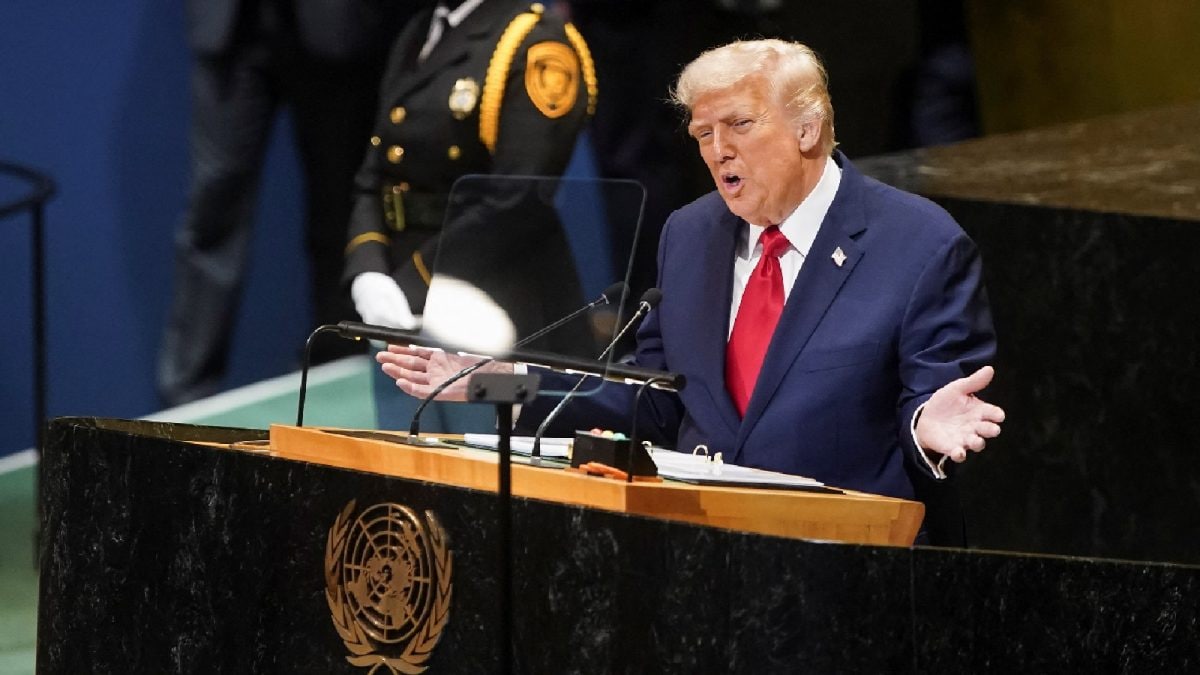ARTICLE AD BOX
Last Updated:October 25, 2025, 22:53 IST
Top Indian intelligence sources have strongly condemned Admiral Ashraf's visit, terming it a 'deliberate attempt to project military assertiveness in disputed maritime zones'

Addressing officers and men during the inspection, Admiral Ashraf articulated a clear strategic vision. Image/News18
Pakistan’s Chief of the Naval Staff, Admiral Naveed Ashraf, has undertaken a highly significant visit to Pakistan’s forward posts in the disputed Creek Areas along the maritime boundary with India, a move designed to assert Pakistan’s operational preparedness and unwavering stance on the contentious Sir Creek issue. The Admiral’s aggressive rhetoric, vowing to defend “every inch of our maritime frontiers from Sir Creek to Jiwani", highlights the increasing strategic focus on this sensitive coastal zone.
The visit was marked by a substantial upgrade to the Pakistan Navy’s operational capability in the complex littoral environment. Admiral Ashraf officially inducted three state-of-the-art 2400 TD Hovercraft into the Pak Marines. These new platforms represent a crucial modernisation step, offering a unique operational advantage. The hovercraft are specifically designed to navigate a variety of challenging terrains simultaneously, including shallow waters, sand dunes, and the marshy, boggy littoral zones that characterise the Creek Areas—environments where conventional craft are rendered ineffective.
Addressing officers and men during the inspection, Admiral Ashraf articulated a clear strategic vision. He underscored that the induction of these amphibious vessels symbolises the Pakistan Navy’s “unwavering resolve in bolstering defence of the country’s maritime frontiers, coastal belt, particularly Creeks Area".
Beyond military necessity, the Naval Chief elevated the importance of the maritime domain to national policy, stating that the Sea Lines of Communication (SLOCs) and overall maritime security are not merely a military requirement, but “a cornerstone of our nation’s sovereignty and a vital pillar of economic prosperity and stability".
Admiral Ashraf affirmed the Navy’s role as a “vanguard of peace and stability in the Indian Ocean Region and a significant stakeholder in regional maritime security". The deployment of the new hovercraft, capable of providing an “effective and decisive response against all adversaries", serves as a forceful reaffirmation to the nation that the Pakistan Navy’s defence capabilities remain robust and its resolve to secure its maritime claims, especially in the strategically sensitive Sir Creek region, is absolute.
Top Indian intelligence sources have strongly condemned Admiral Ashraf’s visit, characterising it as a “deliberate attempt to project military assertiveness in disputed maritime zones". The timing of the visit, immediately preceding planned Indian Tri-Forces joint exercises, is seen by New Delhi as a provocative and calculated move.
According to these sources, the primary intent behind the high-profile naval activity is two-fold: to escalate tensions and to overtly signal Islamabad’s ongoing strategy to internationalise the Sir Creek dispute. This show of force is interpreted as a direct effort to convey deterrence against what Pakistan perceives as India’s enhanced naval activity near the Gulf of Kutch and the wider Arabian Sea.
Crucially, the assessment notes that the Pakistan Navy’s widely publicised induction of the advanced 2400 TD Hovercraft should be viewed as a “defensive rather than offensive upgrade". The unique amphibious capabilities of these vessels are perfectly suited for patrolling and defending the complex, shallow-water estuarine environment of the Creek Areas.
However, the more significant geopolitical implication, as highlighted by Indian Intelligence, is how this military posturing is used to justify deeper strategic alliances. The entire move, sources argue, strengthens the narrative for continued Chinese presence and cooperation under the overarching framework of the China-Pakistan Economic Corridor (CPEC), particularly within the crucial maritime infrastructure connecting Gwadar and Jiwani. Thus, Pakistan’s latest naval manoeuvre is seen not just as a defensive measure, but as a strategic tool to legitimise greater external military-economic engagement in a region highly sensitive to India.
Group Editor, Investigations & Security Affairs, Network18
Group Editor, Investigations & Security Affairs, Network18
First Published:
October 25, 2025, 22:53 IST
News world Pakistan’s Naval Chief Visits 'Disputed Creek Areas' Along Border With India | Exclusive Details
Disclaimer: Comments reflect users’ views, not News18’s. Please keep discussions respectful and constructive. Abusive, defamatory, or illegal comments will be removed. News18 may disable any comment at its discretion. By posting, you agree to our Terms of Use and Privacy Policy.
Read More

 10 hours ago
4
10 hours ago
4










 English (US) ·
English (US) ·